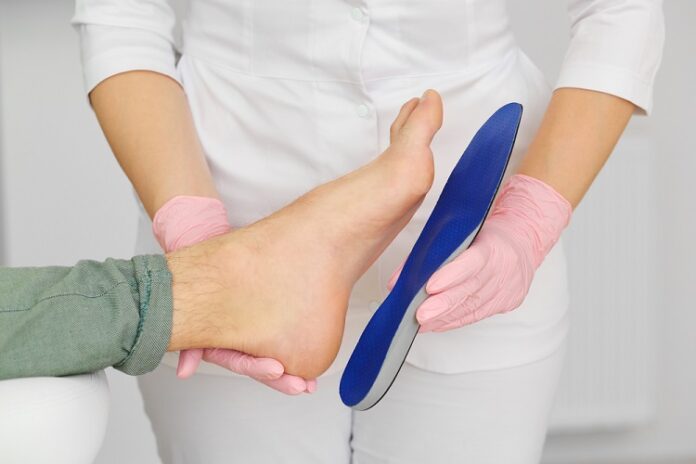Experiencing foot pain can be distressing since it can be debilitating to an active lifestyle. This could occur due to a wide range of underlying problems, however poor biomechanics is believed to be the root cause.
Orthotics Wheat Ridge are specialized shoe inserts fabricated to support your foot and help them move properly by alleviating painful symptoms.
Table of Contents
Introduction to orthotics
Orthotics are special shoe inserts that help in treating various foot problems. These prescription medical devices have been successfully used since centuries as a treatment for foot pain and to improve comfort. Orthotics include devices like foot pads, braces, or cushioning inserts to provide additional support while you are wearing shoes.
They are either available in drug stores or are custom made to provide you an accurate fit. Your foot impression is taken to make a plaster mold to fabricate orthotics as prescribed by your foot and ankle specialist (podiatrist).
How do orthotics work?
There are two types of orthotics with specific way they work to benefit you:
- Accommodative orthotics:
- Provide cushioning and support
- Alleviate painful symptoms arising from foot problems
- Functional orthotics:
- Correct biomechanical issues by distributing your weight away from pressure points
- Guide your foot through corrected motions and improve foot alignment and gait
Painful conditions treated by orthotics
Doctors may prescribe orthotics to treat a number of painful conditions such as:
Achilles tendinopathy: Abnormal swelling (edema) and painful tears in your Achilles tendon that are caused by tight calves.
Pronation and supination: Pain and structural problems that are caused due to abnormal rolling of your feet inward and outward.
Bunions: It is a bony protrusion that develops on the side of your foot due to improper alignment of your metatarsals.
Plantar fasciitis: It is an inflammation along the sole of your foot causing extreme heel pain.
Heel spurs: It is an abnormal accumulation of calcium deposit on your heel due to prolonged, untreated plantar fasciitis.
Metatarsalgia: An increased pressure between your toes and bones in your feet can cause excruciating pain.
Morton’s neuroma: It is a non-cancerous (benign) growth, compressing the nerve between your toe joints.
Sesamoiditis: Tissue inflammation around the big toe joint.
Injuries: Trauma to the foot and ankle can impair your foot biomechanics.
High arches: Extremely high arches can strain the feet’s muscles and cause plantar fasciitis and knee discomfort.
Diabetes: Uncontrolled diabetes may cause loss of sensation in your feet (diabetic neuropathy), causing foot ulcers.
Summary
Orthotics are emerging to be a part of a comprehensive treatment plan to help treat foot and ankle concerns. These devices help to alleviate painful symptoms, provide cushioning and correct the impaired biomechanics of your foot.











